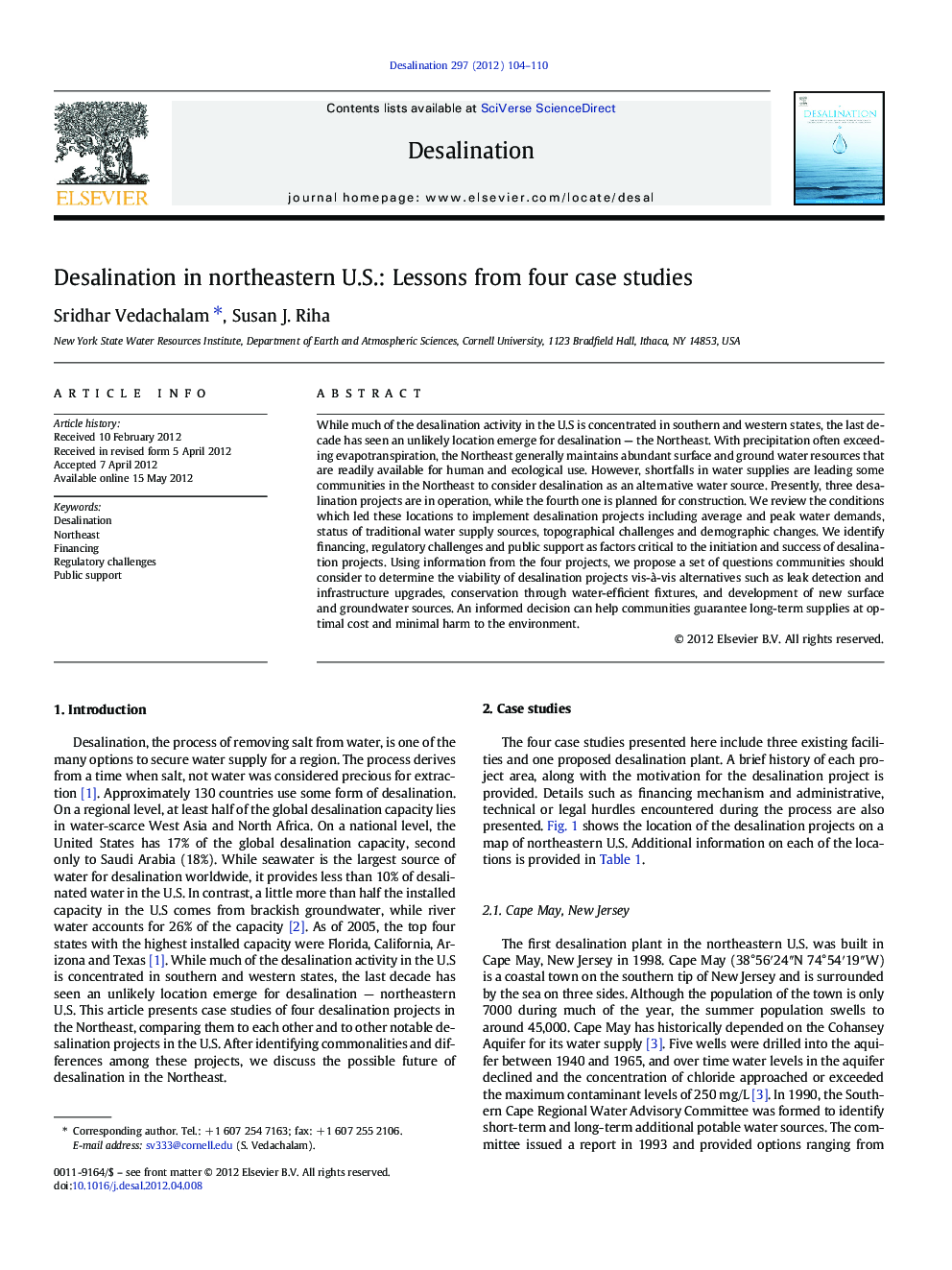| Article ID | Journal | Published Year | Pages | File Type |
|---|---|---|---|---|
| 624287 | Desalination | 2012 | 7 Pages |
While much of the desalination activity in the U.S is concentrated in southern and western states, the last decade has seen an unlikely location emerge for desalination — the Northeast. With precipitation often exceeding evapotranspiration, the Northeast generally maintains abundant surface and ground water resources that are readily available for human and ecological use. However, shortfalls in water supplies are leading some communities in the Northeast to consider desalination as an alternative water source. Presently, three desalination projects are in operation, while the fourth one is planned for construction. We review the conditions which led these locations to implement desalination projects including average and peak water demands, status of traditional water supply sources, topographical challenges and demographic changes. We identify financing, regulatory challenges and public support as factors critical to the initiation and success of desalination projects. Using information from the four projects, we propose a set of questions communities should consider to determine the viability of desalination projects vis-à-vis alternatives such as leak detection and infrastructure upgrades, conservation through water-efficient fixtures, and development of new surface and groundwater sources. An informed decision can help communities guarantee long-term supplies at optimal cost and minimal harm to the environment.
► We review four desalination projects in Northeastern U.S. ► We review conditions that led to the initiation of desalination projects. ► Financing, regulatory challenges and public support are critical for success. ► Cost-benefit analysis of alternatives needed to make optimal decisions.
